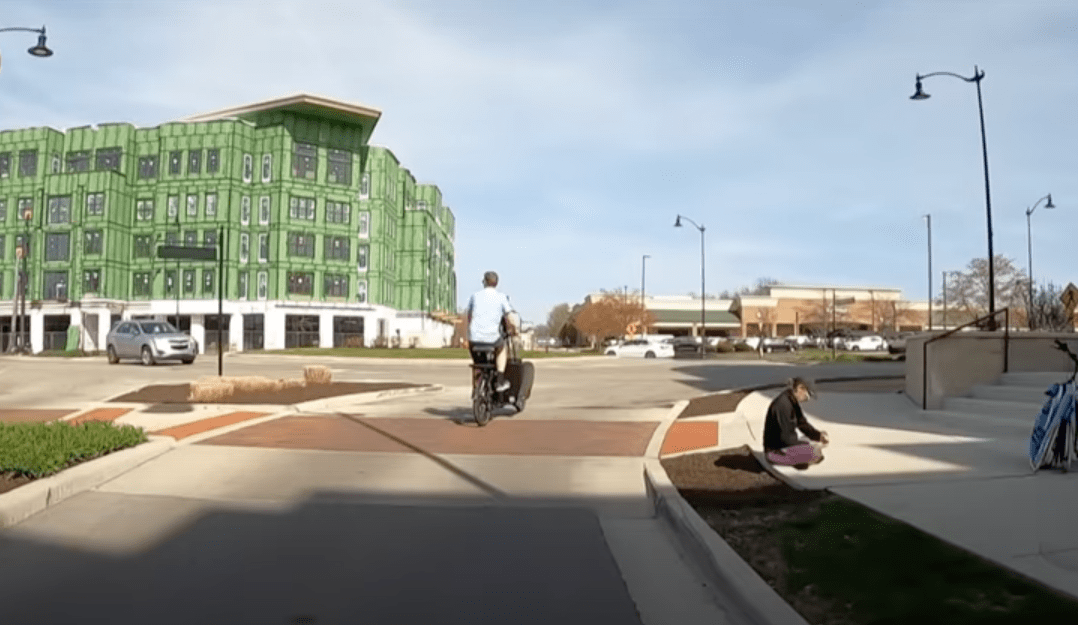Roundabouts have been a ubiquitous feature of the European roadway landscape for decades, slashing serious crash rates by encouraging drivers to slow down. But how does the U.S. approach to this game-changing infrastructure compare to our friends across the pond?
To find out, YouTuber BicycleDutch visited one of the few American cities to embrace the roundabout with open arms: Carmel, Indiana. And along the way, he explores how the city's 150+ (!) roundabouts feed into an impressive walking and cycling network, what impact it's had on the local economy, and how on earth all this stuff got built in conservative, small-city America.
Give it a watch, and you think Carmel's pretty sweet, check out our 2022 interview with mayor Jim Brainard here.
Friday Video: What the Dutch Think of America’s Roundabout Capital
Carmel, Indiana has become nationally famous for slowing down drivers. But what do Europeans think of its progress?

Carmel, Indiana is famous for its 150 roundabouts.
|Still from Bicycle Dutch.Stay in touch
Sign up for our free newsletter
More from Streetsblog USA
In NYC, Unlicensed Drivers Comprise One-Quarter Of Street Fatalities: Data
Unlicensed drivers are linked to fatal crashes much more often now than pre-pandemic
Tuesday’s Headlines Need Exercise
Every hour in a car increases the risk of obesity by 6 percent, while walking a kilometer lowers it 5 percent.
Opinion: Stop Asking If People Want to Ride Bikes
"We shouldn’t be aiming to nudge a few percentage points in public opinion. Our goal should be to make freedom of mobility so compelling that people demand it."
When the Government Says You’re ‘Weaponizing’ Your Car
Immigrations and Customs Enforcement officers have been brutalizing and killing people who they perceive as threats. Is mass automobility multiplying their pretext to do it?
Should Monday’s Headlines Carry a Carrot or a Stick?
Human beings generally don't like being forced to do anything, so Grist wonders whether policies like car bans could actually be counterproductive?
Chicago Explores Black Perspectives on Public Transit
"We're not going to fix decades of inequitable investment in one year, and things like the high-frequency bus network and the Red Line Extension are really important, but the work isn't done."





